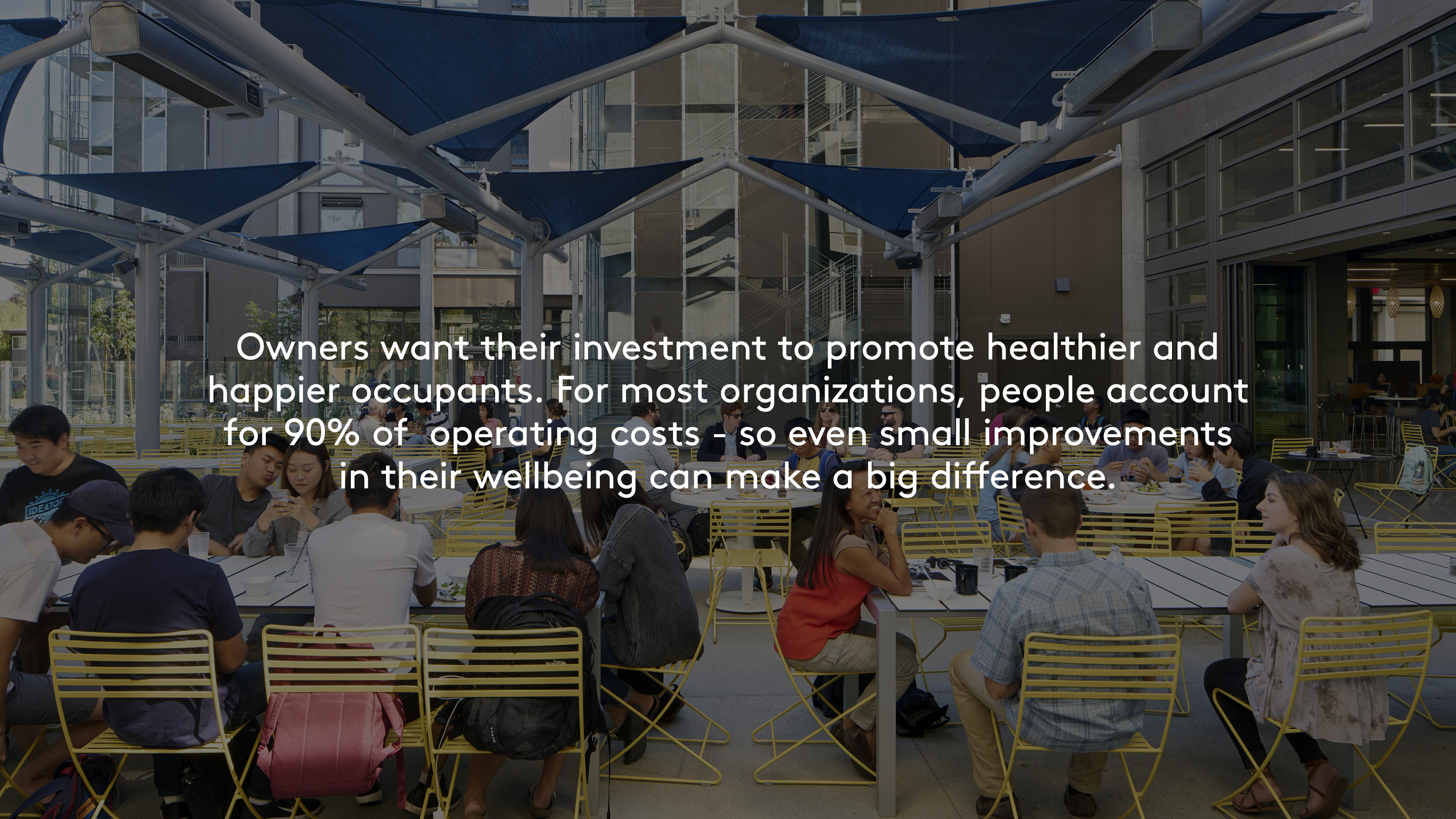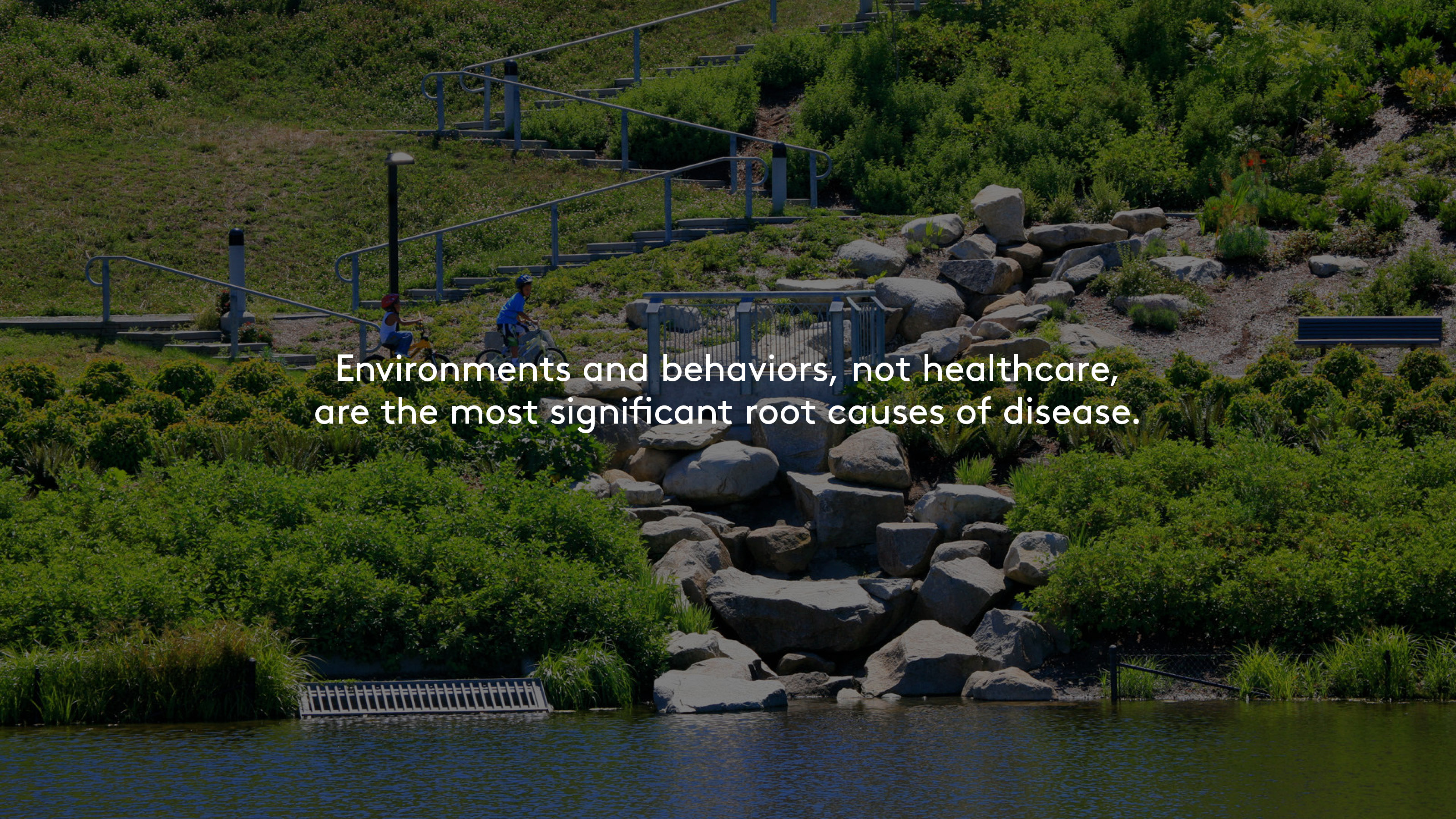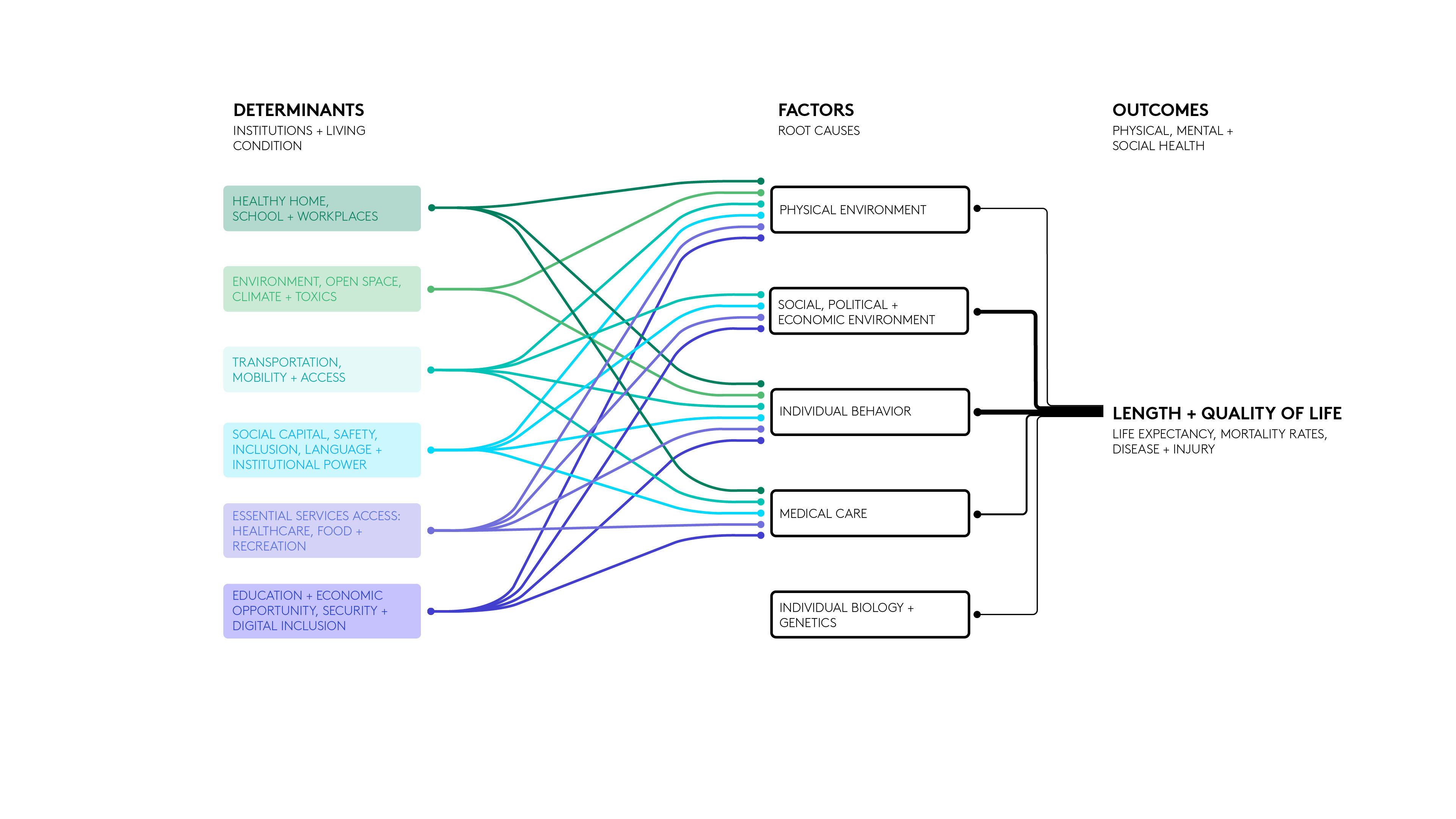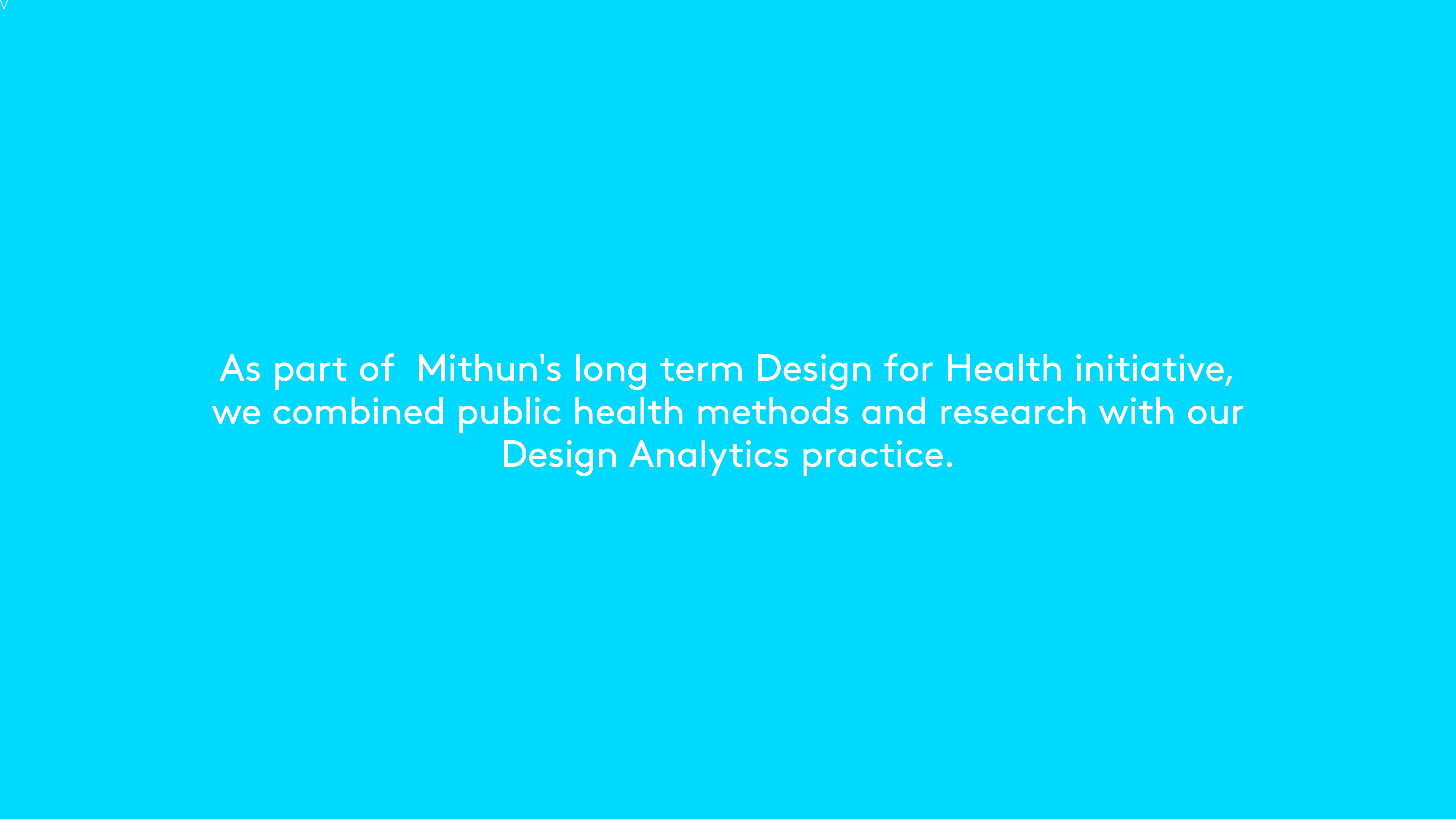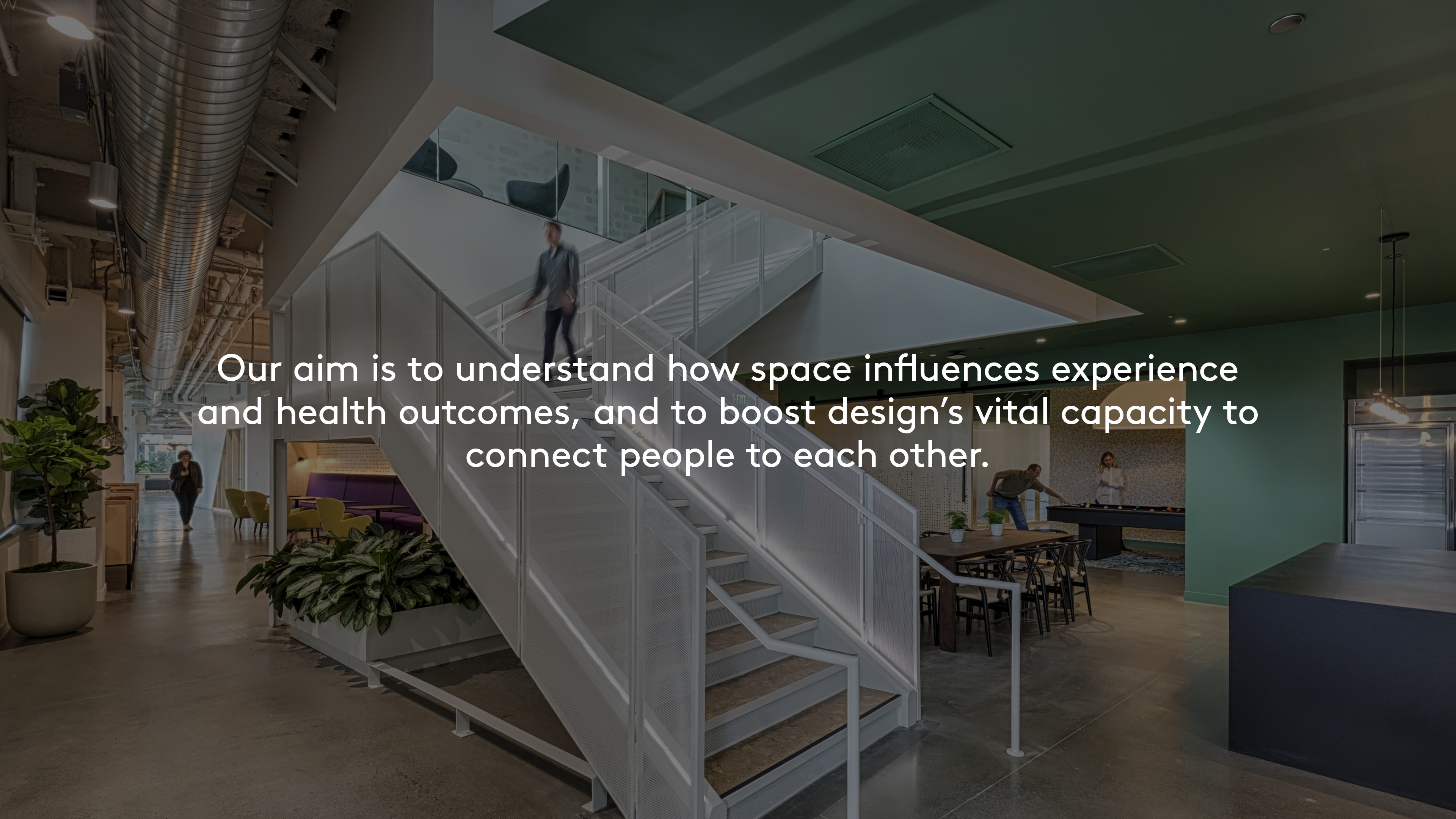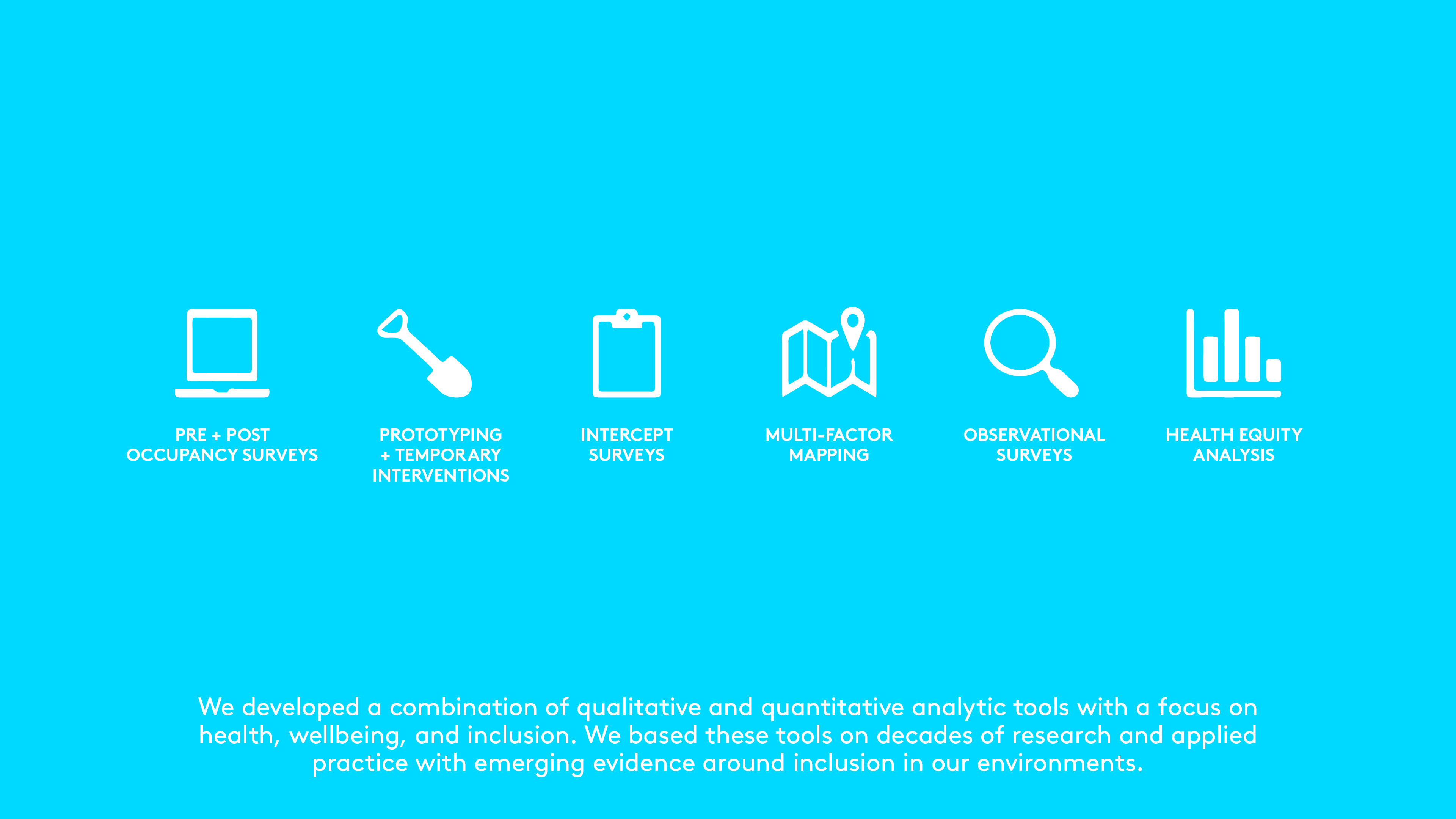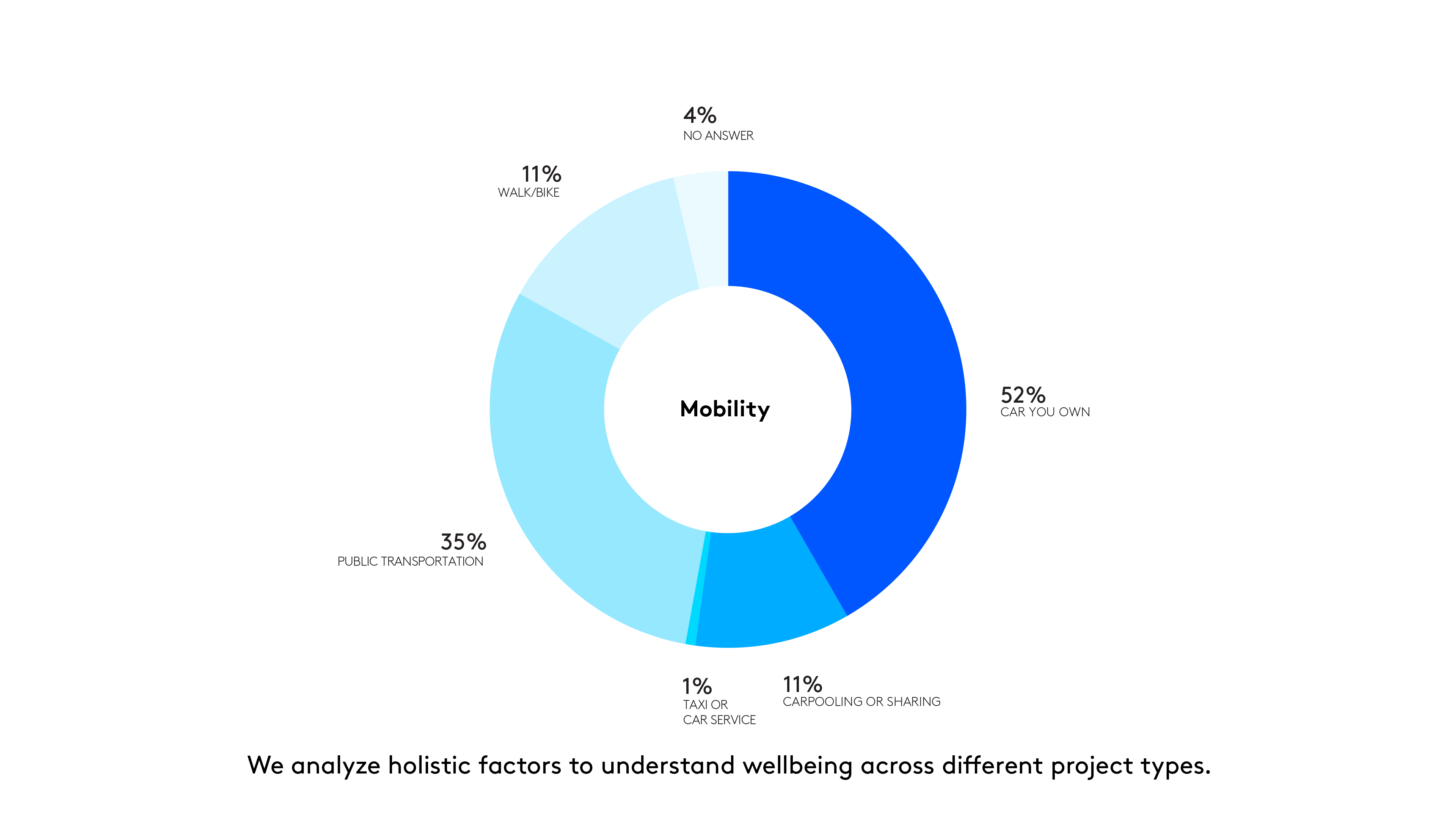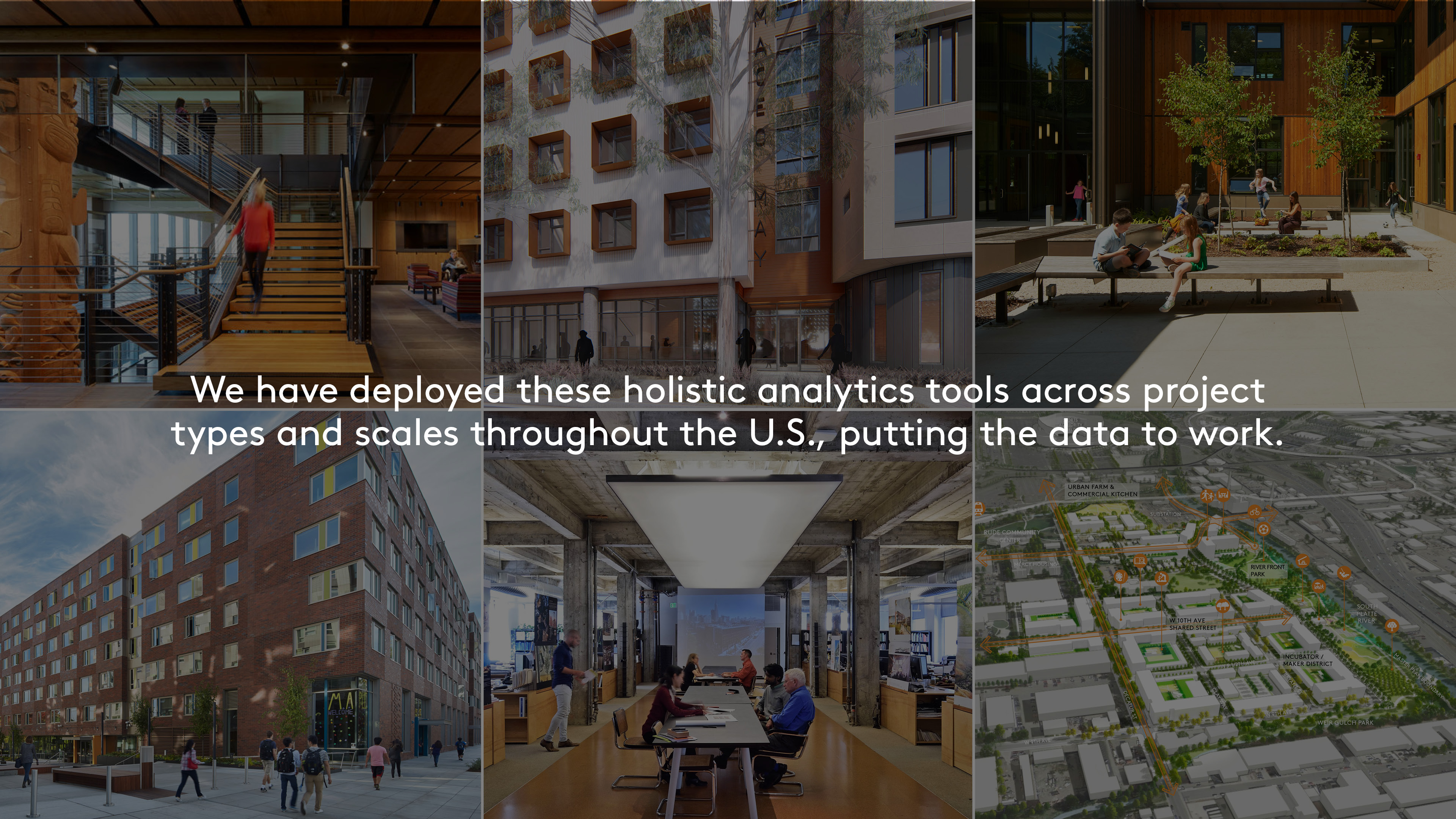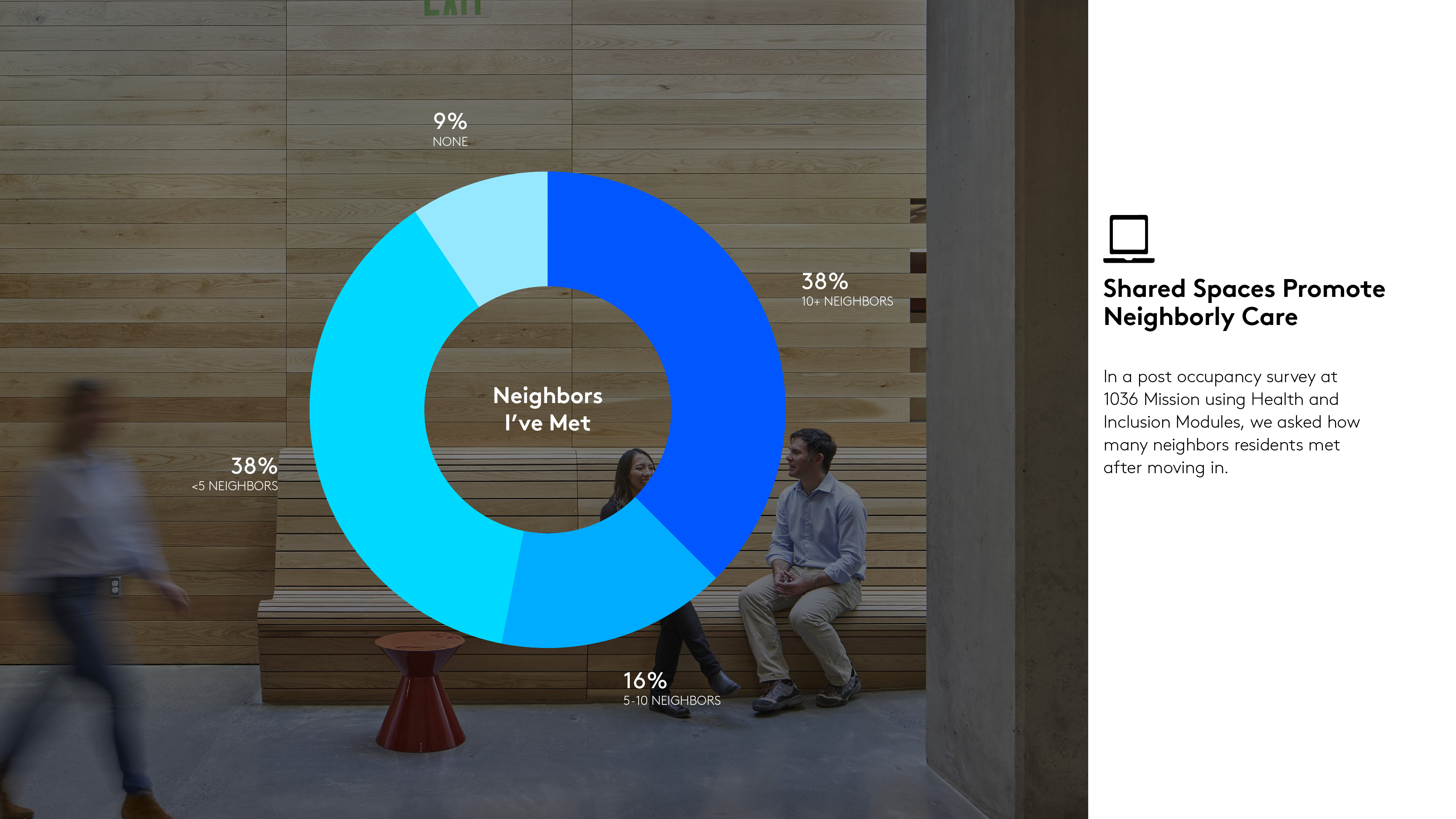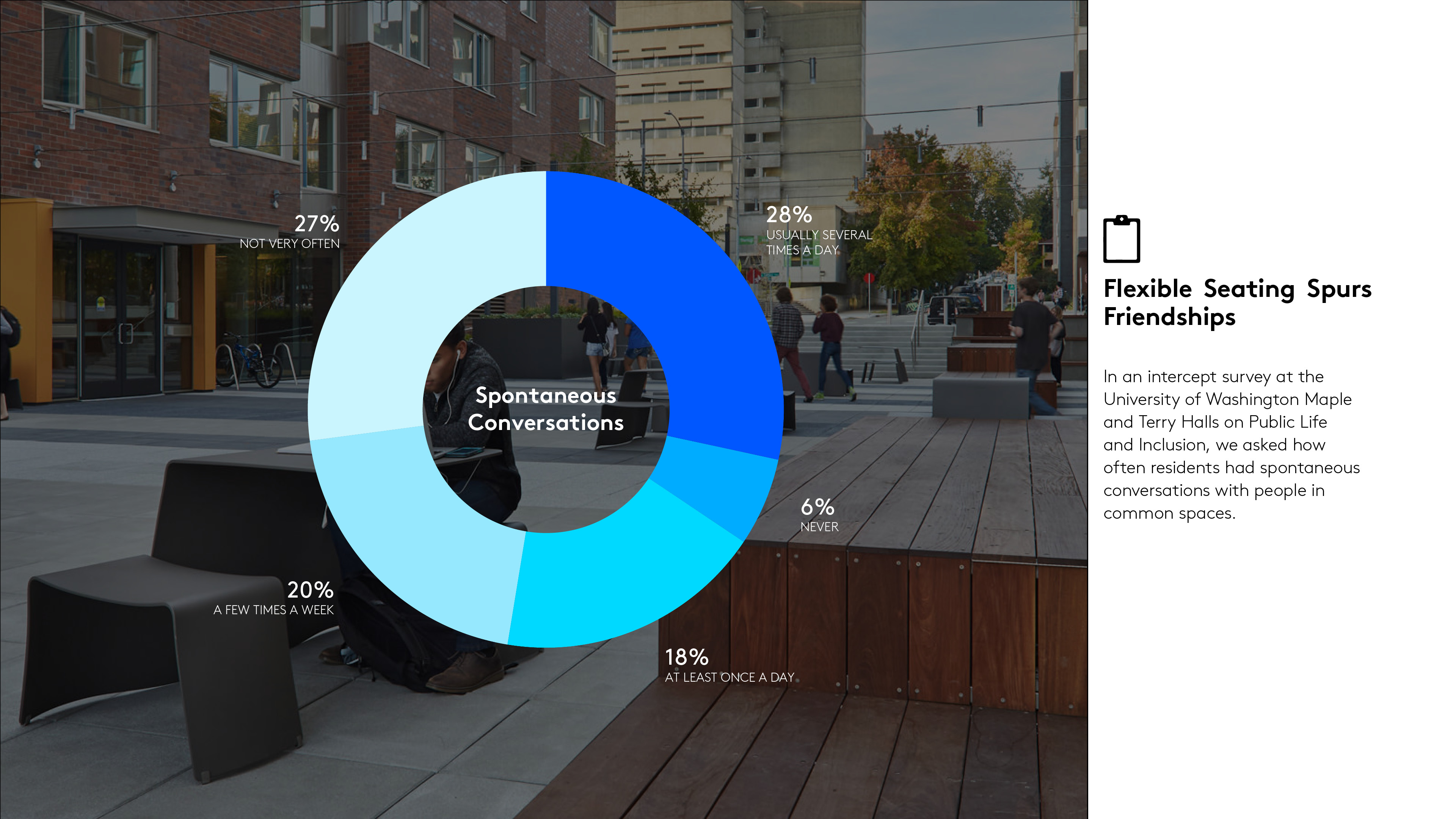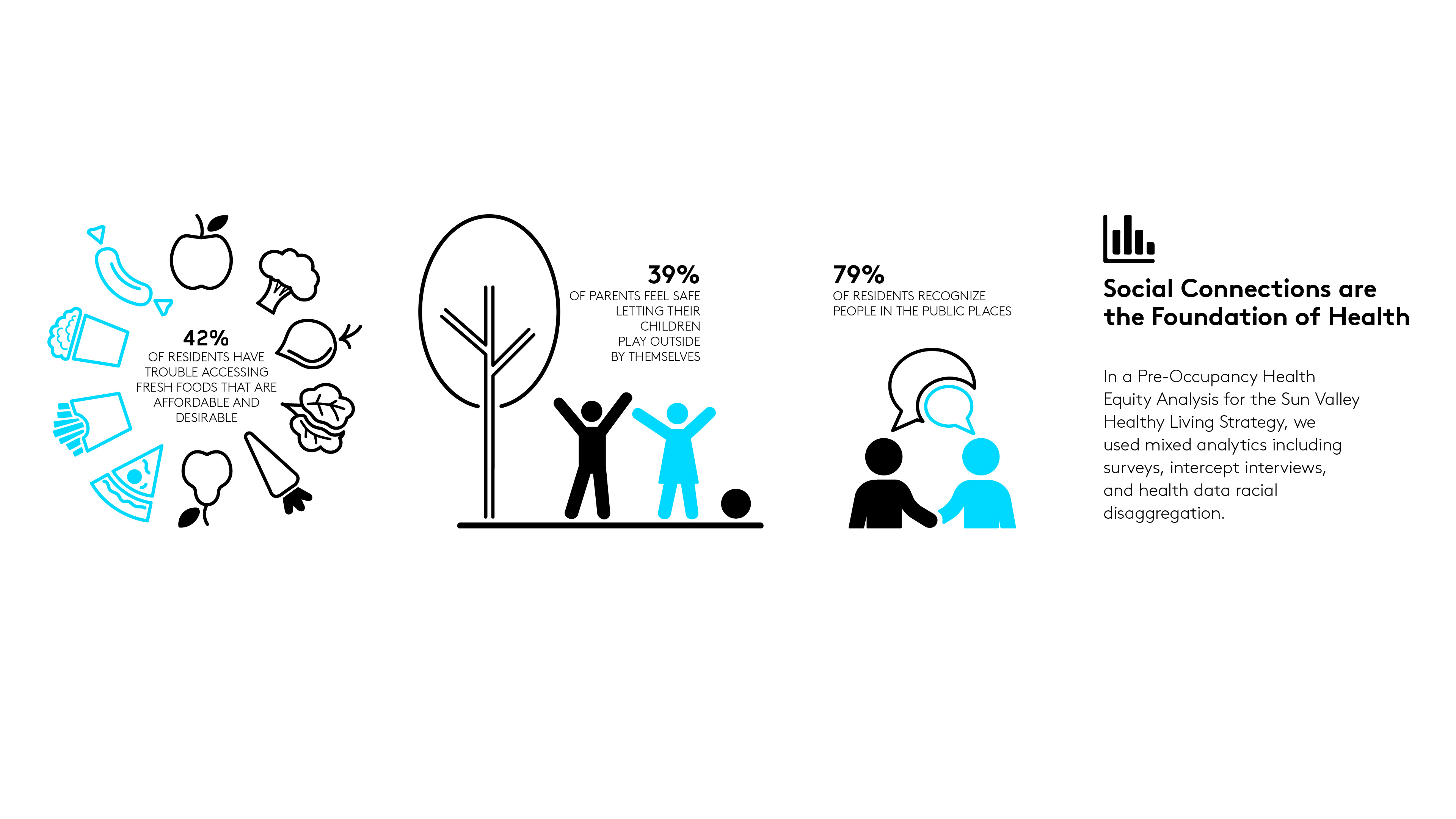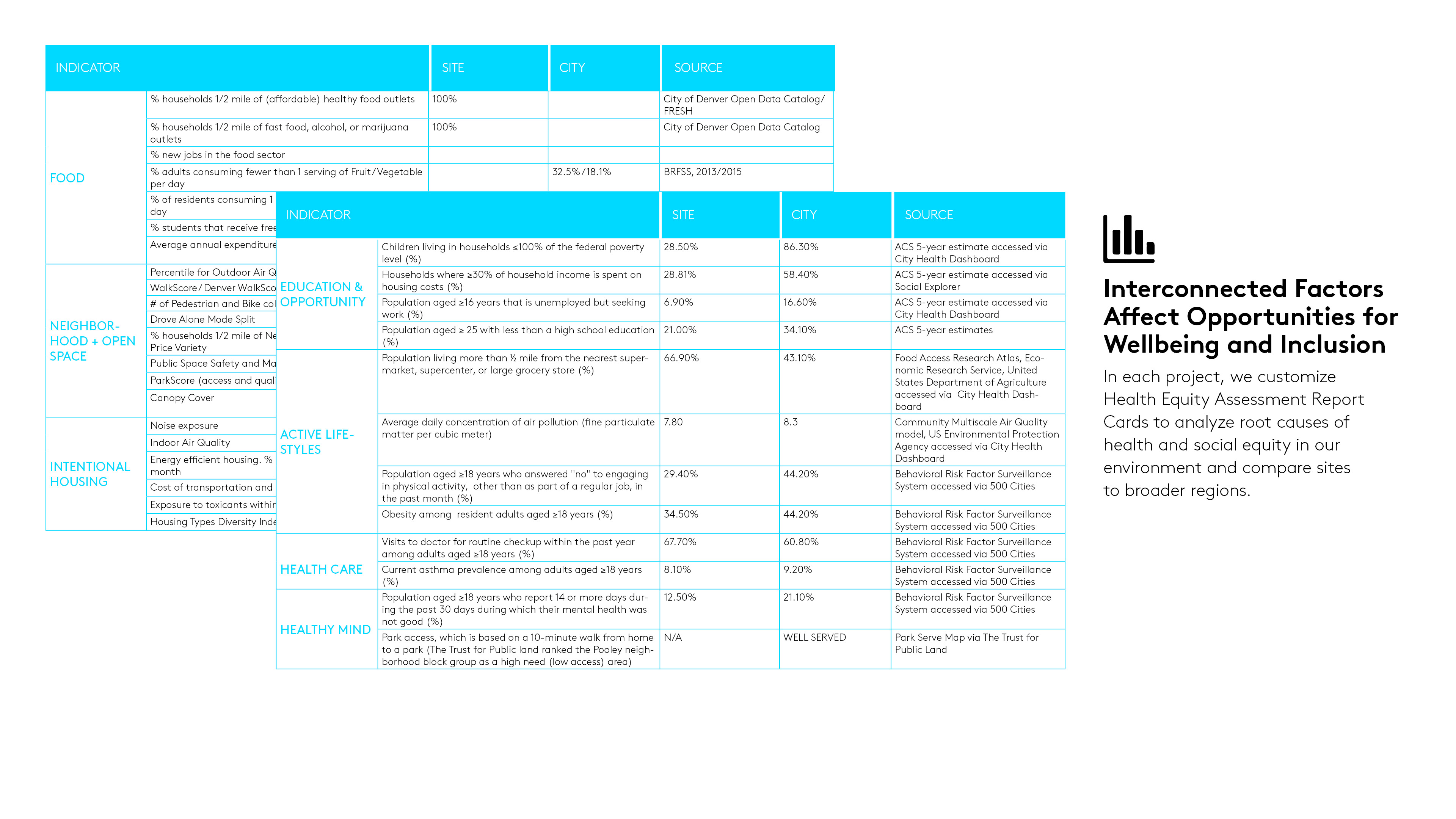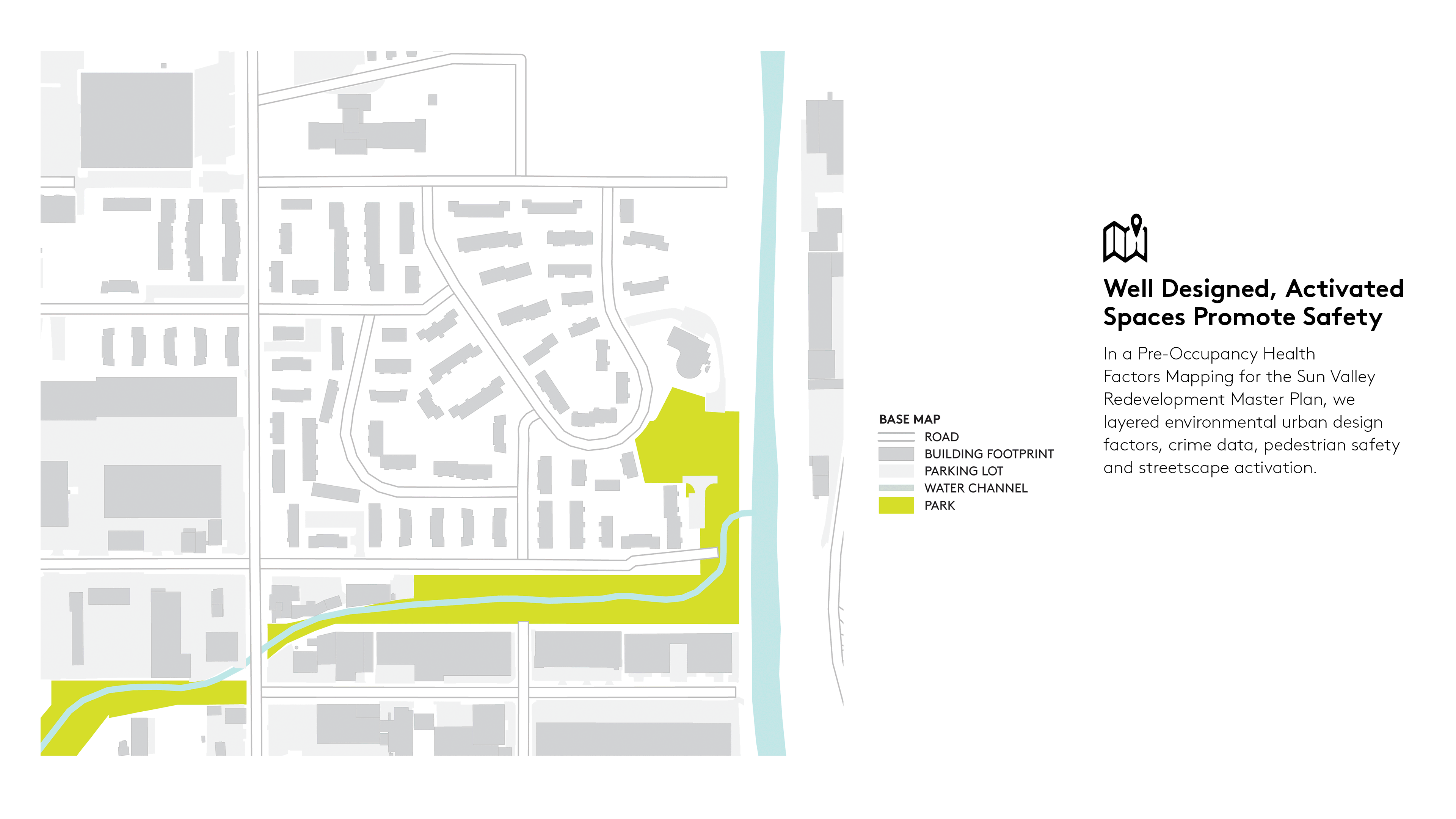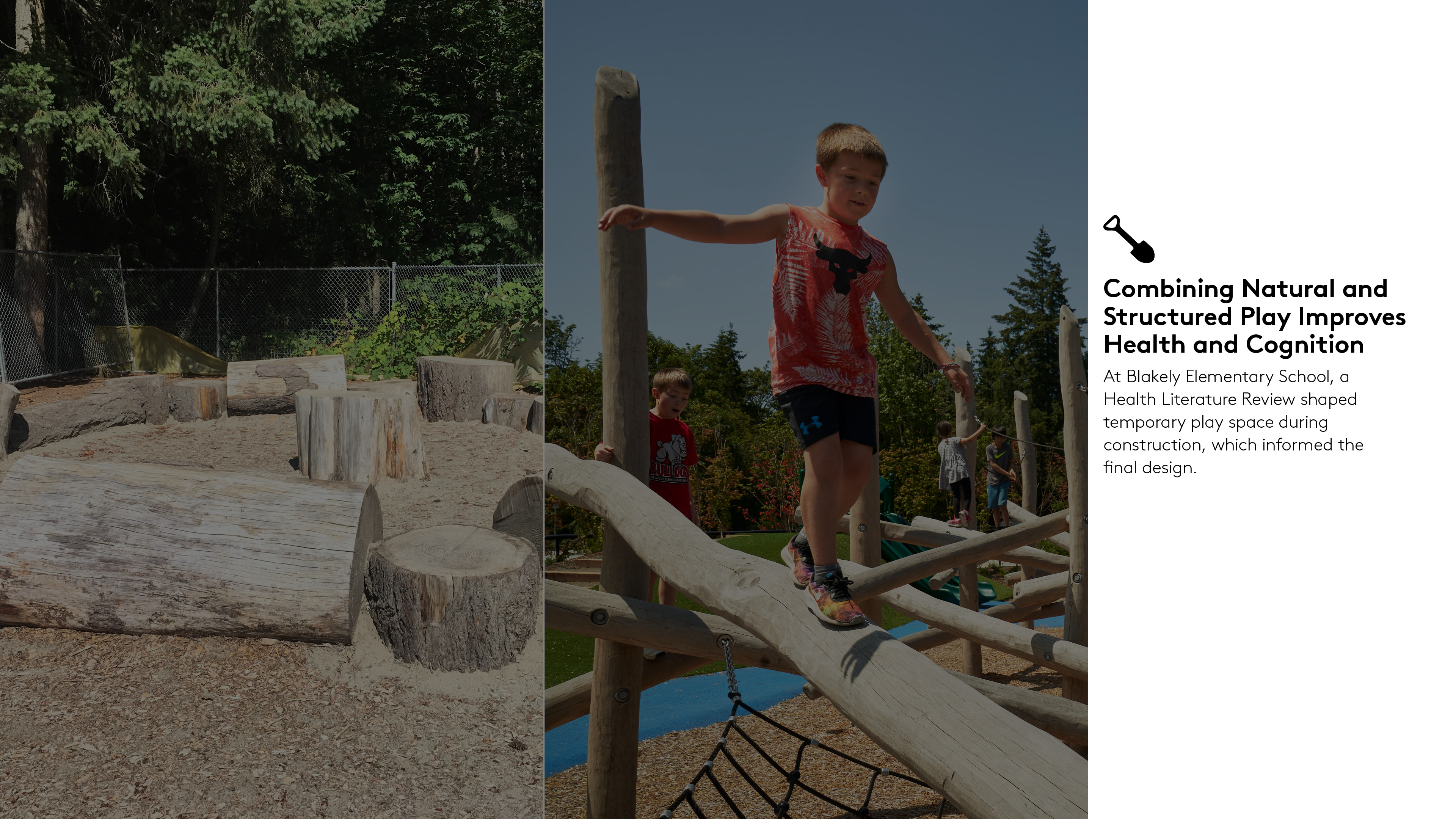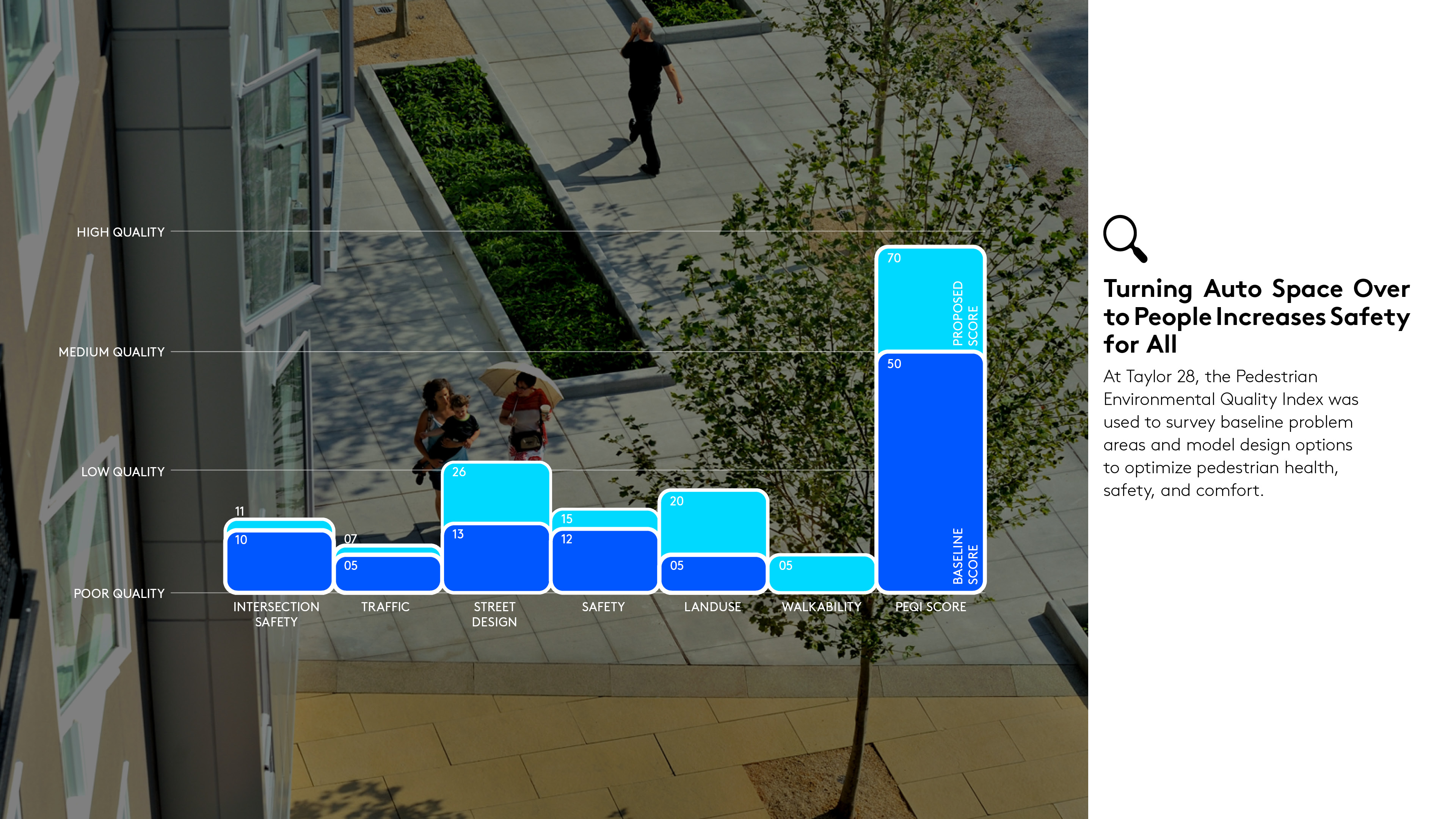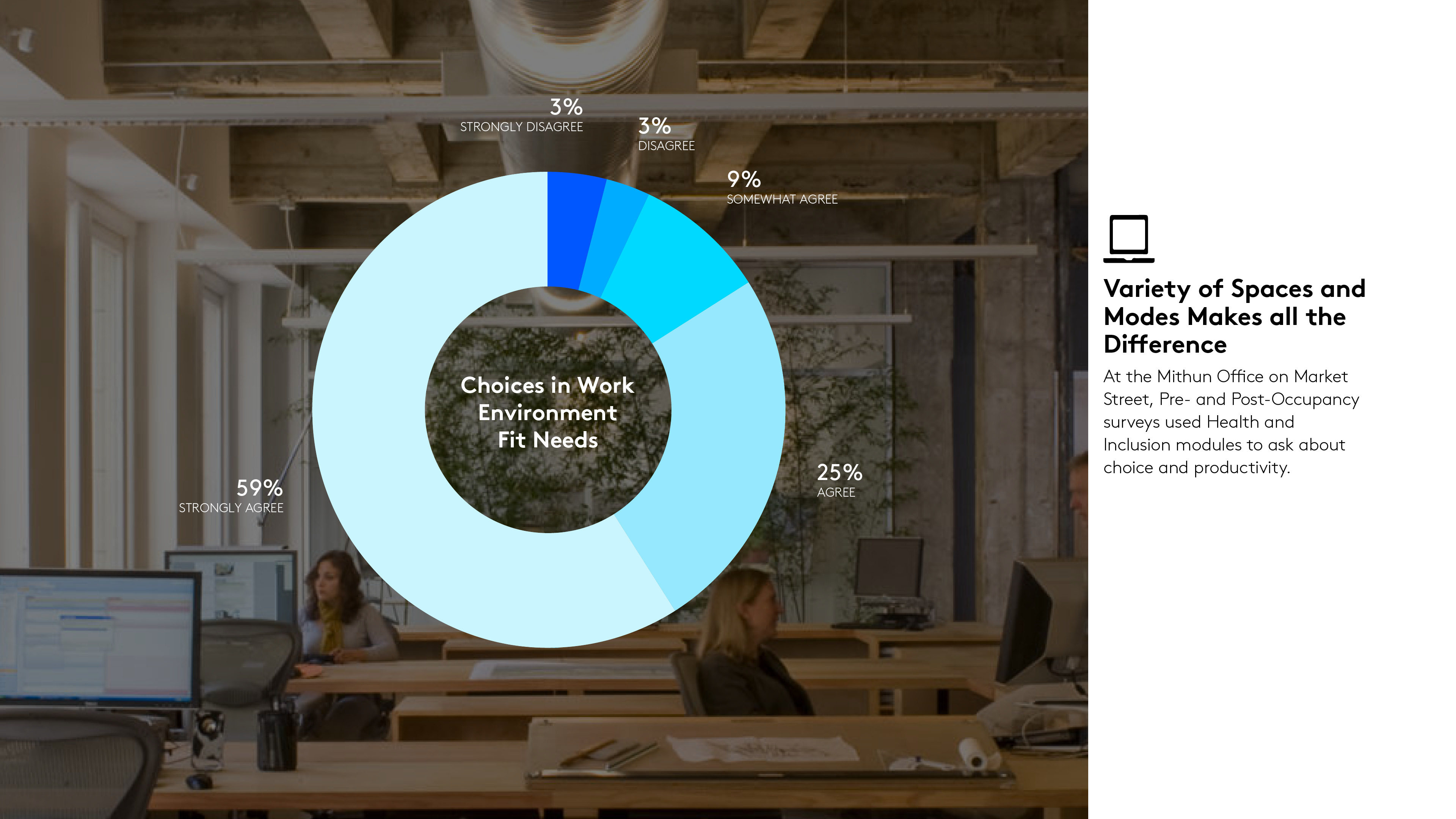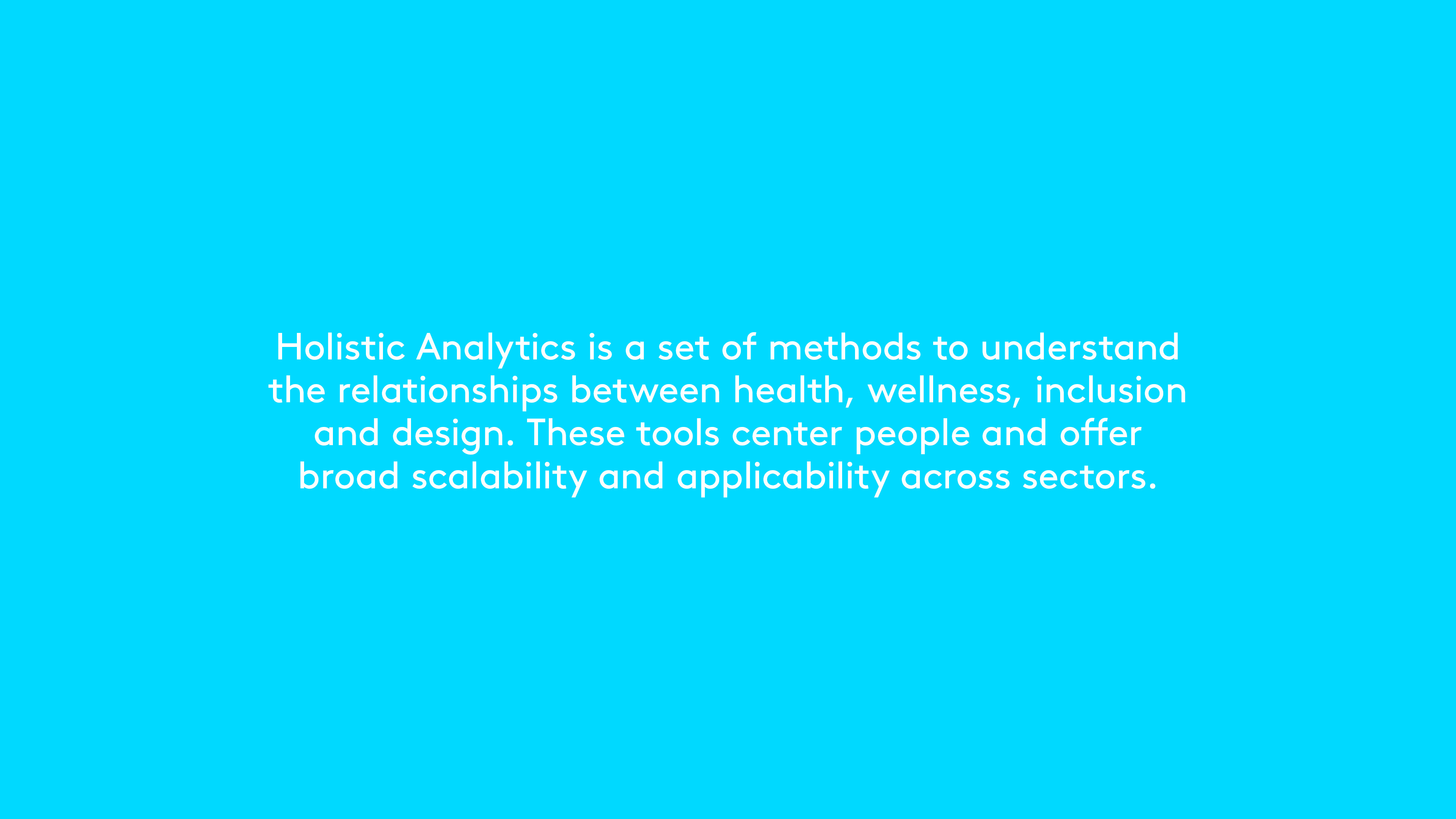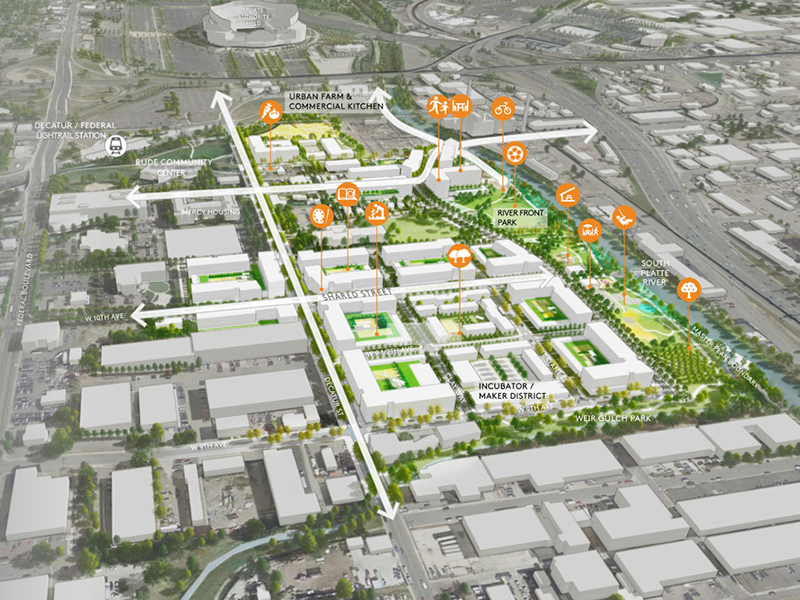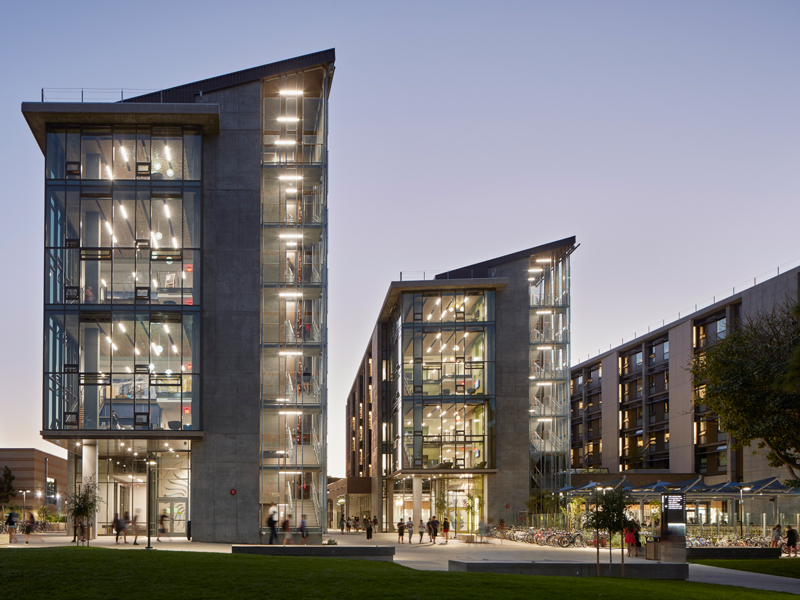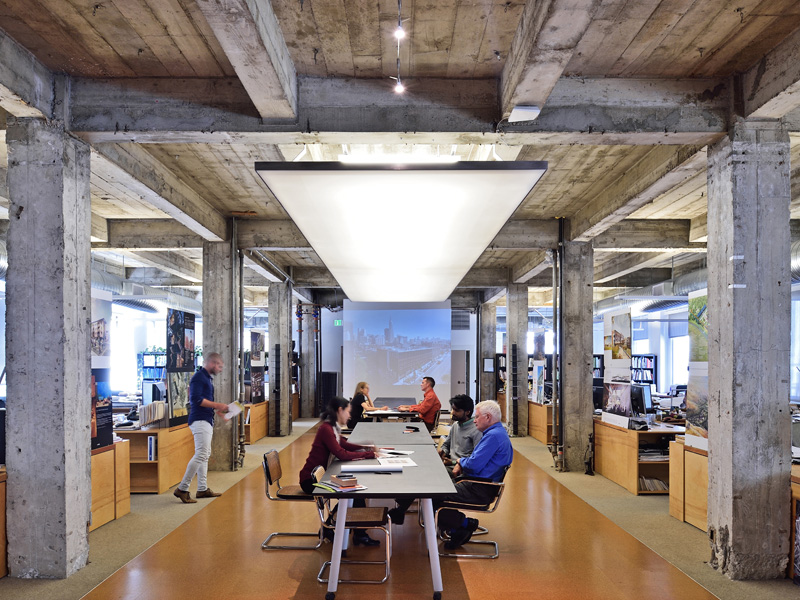Health-Responsive Experience
Vision
Chronic disease affects the majority of Americans, and is also the most costly and preventable type of disease. By looking upstream to root causes in the places we spend our time, there is potential to improve opportunities for healthy places and behaviors. In the last decade, market research has found that the vast majority of building owners hope their investment promotes healthier and happier users. Because the operations lifespan is the longest part of the cycle, health and wellbeing of users is also a significant contributor to the financial success of a project. This R+D study builds upon Mithun’s existing Design for Health initiative and Design Analytics practice with public health methods and research. The project aims to understand how space influences experience and health outcomes, and to boost design’s vital capacity to connect people to each other.
Research
Initial engagement within the design field found gaps in technical knowledge as well as sector-specific information relating to health and well-being to share with clients. Based on this scoping, the research approach included three activities: piloting holistic analytics as a tenet of integrative design, developing a toolkit for teams to put health research and methods to work, and deployment within the broader practice. From this, design research practice guidance and resources were developed, including fundamentals on evidence-based design and evaluation. Several new qualitative and quantitative design analytics tools were developed and tested on projects including health and inclusion survey modules, intercept and observational surveys, mapping and indicator analysis, and focus prototyping and temporary installations.
Looking Forward
Holistic Analytics are a set of methods to understand the relationships between health, well-being, inclusion and design. These tools offer broad scalability and applicability across sectors—in places where people live, work, learn and play. They structure a new way to center people in any project and help boost our mission of Design for Positive Change.


